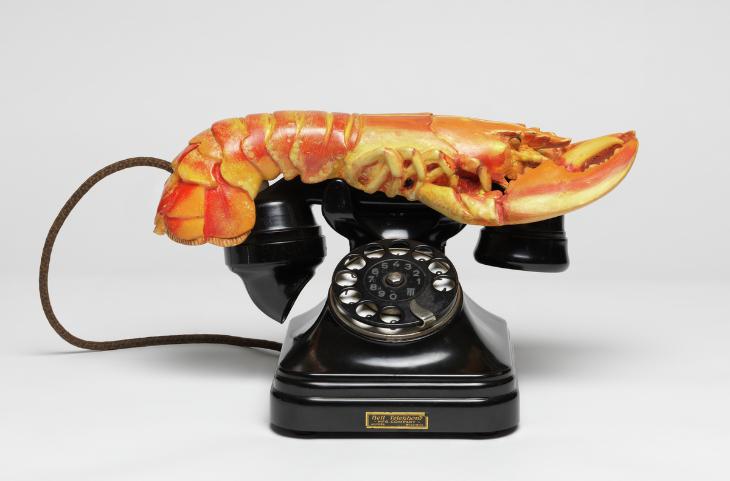
(Updated 26.04.18)
Module Outline
Our module seeks to answer a fundamental question: `What makes art modern?` In pursuit of this question, we will concentrate on key strands of European modern art in the first decades of the twentieth century, such as Futurism, German Expressionism, Constructivism, and Surrealism. And we shall consider several topics: how the excitement for and fear of new technologies influenced the art of the period; the intersections between art, mass media, and consumer culture; the impact of one of the most traumatic events in history, the first World War, on artists and their art-making; and how painters at this time were increasingly dazzled by the possibility of an entirely non-representational or non-objective art. We will re-examine and unpack such iconic works as Boccioni’s Unique Forms of Continuity in Space, Kirchner’s series on the city, Brancusi’s Bird in Space, Kandinsky’s Compositions and Malevich’s Black Square..
The aims of this module are:
1. to develop a greater understanding of key developments in modern European art from the 1900s through c. 1940;
2. to introduce students to artworks from this period and to the comparative study of modernism across European countries;
3. to expose students to debates in past and recent literature about the interpretation of modern European art from the first half of the 20th century;
4. to raise students` awareness of different methods for analysing works of art;
5. to stimulate students to develop skills in written communication through essay and oral communication and debate in seminars.
Learning outcomes
By the end of this module the student should have:
1. a greater appreciation and richer understanding of early 20th-century modern European art;
2. insight into different methods of art-historical investigation that have been used to analyse modern European art from this period;
3. some experience in textual analysis relevant to artworks and theoretical debates from this period;
4. an ability to demonstrate all of these competences through one coursework essay of 3,000 words and an unseen examination.
By the end of the module, students should also have acquired a set of transferable skills, and in particular be able to:
1. define the task in which they are engaged and exclude what is irrelevant;
2. seek and organise the most relevant discussions and sources of information;
3. process a large volume of diverse and sometimes conflicting arguments;
4. compare and evaluate different arguments and assess the limitations of their own position or procedure;
5. write and present verbally a succinct and precise account of positions, arguments, and their presuppositions and implications;
6. be sensitive to the positions of others and communicate their own views in ways that are accessible to them;
7. think 'laterally' and creatively (i.e., to explore interesting connections and possibilities, and to present these clearly rather than as vague hunches);
8. maintain intellectual flexibility and revise their own position based on feedback;
9. think critically and constructively.
Module Outline
Our module seeks to answer a fundamental question: `What makes art modern?` In pursuit of this question, we will concentrate on key strands of European modern art in the first decades of the twentieth century, such as Futurism, German Expressionism, Constructivism, and Surrealism. And we shall consider several topics: how the excitement for and fear of new technologies influenced the art of the period; the intersections between art, mass media, and consumer culture; the impact of one of the most traumatic events in history, the first World War, on artists and their art-making; and how painters at this time were increasingly dazzled by the possibility of an entirely non-representational or non-objective art. We will re-examine and unpack such iconic works as Boccioni’s Unique Forms of Continuity in Space, Kirchner’s series on the city, Brancusi’s Bird in Space, Kandinsky’s Compositions and Malevich’s Black Square..
The aims of this module are:
1. to develop a greater understanding of key developments in modern European art from the 1900s through c. 1940;
2. to introduce students to artworks from this period and to the comparative study of modernism across European countries;
3. to expose students to debates in past and recent literature about the interpretation of modern European art from the first half of the 20th century;
4. to raise students` awareness of different methods for analysing works of art;
5. to stimulate students to develop skills in written communication through essay and oral communication and debate in seminars.
Learning outcomes
By the end of this module the student should have:
1. a greater appreciation and richer understanding of early 20th-century modern European art;
2. insight into different methods of art-historical investigation that have been used to analyse modern European art from this period;
3. some experience in textual analysis relevant to artworks and theoretical debates from this period;
4. an ability to demonstrate all of these competences through one coursework essay of 3,000 words and an unseen examination.
By the end of the module, students should also have acquired a set of transferable skills, and in particular be able to:
1. define the task in which they are engaged and exclude what is irrelevant;
2. seek and organise the most relevant discussions and sources of information;
3. process a large volume of diverse and sometimes conflicting arguments;
4. compare and evaluate different arguments and assess the limitations of their own position or procedure;
5. write and present verbally a succinct and precise account of positions, arguments, and their presuppositions and implications;
6. be sensitive to the positions of others and communicate their own views in ways that are accessible to them;
7. think 'laterally' and creatively (i.e., to explore interesting connections and possibilities, and to present these clearly rather than as vague hunches);
8. maintain intellectual flexibility and revise their own position based on feedback;
9. think critically and constructively.